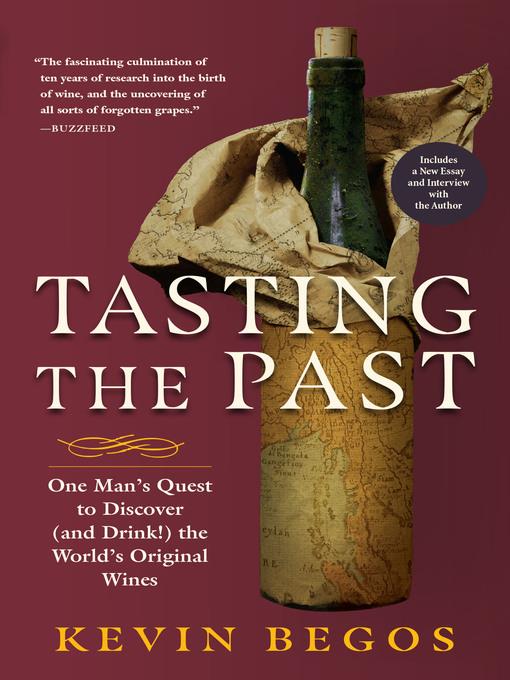
Tasting the Past
One Man's Quest to Discover (and Drink!) the World's Original Wines
کتاب های مرتبط
- اطلاعات
- نقد و بررسی
- دیدگاه کاربران
نقد و بررسی

April 15, 2018
While on assignment in Jerusalem, journalist and science writer Begos tried a local wine from a grape he'd never heard of. That wine was a revelation of flavors, but finding more information on it was impossible; in fact, many authoritative references stated there was no indigenous wine industry in Israel. Thus began a personal journey into the history and development of wine, with a focus on local and forgotten grape varieties. Begos talked to scientists tracing grape DNA, historians trying to replicate a vineyard belonging to Leonardo Da Vinci, and vintners reviving traditions such as using clay amphorae for fermentation. The quest took him to the Caucasus mountains in Georgia, back to Israel, through Greece, Italy, and France before landing home in the United States. The tone throughout is one of avid curiosity, with the casual oenophile as the target audience. Readable and well-researched, the book includes endnotes and sources for further reading, as well as several lists of wines to try. VERDICT A palatable blend of history, food science, and travel writing.--Devon Thomas, Chelsea, MI
Copyright 2018 Library Journal, LLC Used with permission.

May 1, 2018
You don't need to be an oenophile to enjoy this flavorful adventure about one wine nerd's search for the perfect grape.In 2008, when former AP correspondent Begos was in his hotel room in Amman, Jordan, he took a red wine named Cremisan out of the mini-bar. He wasn't expecting much, but "wow. I perked up immediately. The dry red wine had a spicy flavor." As he writes, "my hotel room wine morphed from an obsession into training wheels," and he was off on a two-year quest to learn more. Begos traveled through the original wine routes from the Caucasus Mountains and the Holy Land and north through Europe. He soon realized that it was not the wine he was seeking but the grape or grapes from which the wine was made. There would be more wine sampling ahead and interviews with experts who would provide him with "facts instead of just colorful myths." At the University of Pennsylvania, archaeologist Patrick McGovern, the "Indiana Jones of ancient wine and beer," taught the author how tests using liquid chromatography have helped identify types of wines in King Tut's tomb. At the Cremisan monastery in Jerusalem, Begos discovered that his 2008 wine was probably made in 2006, "so I'd tasted one of the last vintages made by the monks." In a small city on the Rhone, the author learned about ampelography while visiting with Jose Vouillamoz, a "kind of John James Audubon for endangered grapes." It was like studying "branches (or vines) twisting in all directions, each shoot representing a different variety, a new flavor." Others taught Begos about the importance of the soil (terroir) and yeast in the fermentation process. His "biggest American winemaking surprise came from Oregon," which "may be the epicenter of wine innovation in America, even if there's more money in California or New York."The narrative occasionally drags, but this multidisciplinary master class in the history, science, religion, and literature of wines is as luscious as a full-bodied pinot noir.
COPYRIGHT(2018) Kirkus Reviews, ALL RIGHTS RESERVED.

May 7, 2018
Oenophiles will raise a glass to Begos’s excellent exploration of the science and history of wine, now a $300 billion global market. Begos, a former Associated Press correspondent, found an unusual red wine in a Jordanian hotel’s mini-bar while on assignment. The wine was produced in Bethlehem—a place not generally known for its wine—and this piqued his curiosity about the origins of wine. Begos visited vineyards around the globe, beginning with the Caucasus Mountains, where grape vines were first cultivated, and making stops in Israel, Greece, Italy, France, and the U.S. Along the way, he consulted with experts such as Shivi Drori, an Israeli scientist studying indigenous grapes; University of Pennsylvania archaeologist Patrick McGovern, whom Begos calls “the Indiana Jones of wine and beer” for his work in biomolecular archaeology; and Swiss scientist Jose Vouillamoz, a “John James Audubon for endangered grapes.” Begos discusses the many variables that can affect a wine’s taste, including soil, the material of the barrels in which the beverage is aged, and pesticides. He helpfully finishes many chapters with lists of recommend wines. This mix of memoir and wine education guide is all-around satisfying.

























دیدگاه کاربران